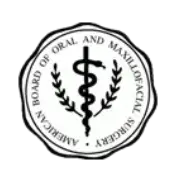Ancient Pompeiians Had Good Dental Health But Were Not Necessarily Vegetarians
By: Kristina Killgrove, Forbes
Despite the lack of the modern technology, the Pompeiians were still able to keep their teeth healthy and strong. Want to discover their secret? Check this out! The Oral Surgery DC TeamResults of the CT scans of the plaster casts of Pompeiians who perished in the 79 AD eruption of Vesuvius CKSNY +0%are in, and they are spectacular. As smoke suffocated the populace and ash fell on their bodies, they were gradually made into pumice shells, their flesh rotting away and leaving bone and teeth. In the 19th century, archaeologists poured plaster into the pumice shells, creating the twisted but resilient bodies tourists can view when they visit the ruins of the ancient city. Months of research by the Archaeological Superintendency of Pompeii has now revealed images of the inside of these casts - bones, teeth, roots, and all.
While archaeologists have been applying this 21st century technology - 3D scanning and printing the casts as well as CT scanning them - for a while now, today's news caught my eye because of the dietary implications. After looking at nearly three dozen people, archaeologists have found little evidence of dental cavities. What raised my eyebrows, though, was a quote in La Repubblica, "I pompieani avevano denti sanissimi, solo in rarissimi casi scalfiti dalla carie: questo, grazie all'alimentazione vegetariana prevalente e alla quasi totale assenza di zuccheri nel consumo alimentare, come ha spiegato l'odontoiatra specialista Elisa Vanacore." ["The Pompeiians have healthy teeth, only in the rarest cases marred by decay: this is thanks to a mainly vegetarian diet and to an almost total lack of sugar in the diet, explained dental surgeon Elisa Vanacore."] Yes, their diet was likely high in fresh fruits and vegetables, and low in refined sugar. But that doesn't make it vegetarian, and vegetarian diets aren't linked to low frequencies of dental cavities.
When we talk about ancient diets, we're looking primarily at commonalities - what the average person was eating - while at the same time understanding that omnivores make for a dietarily heterogeneous population. There is no singular "American" diet, but we can agree that most of us likely consume a large amount of corn-based products, which are cheap and ubiquitous in the form of corn syrup, tortilla chips, popcorn, etc., and that differentiates us from Europeans. In the absence of toothbrushes and toothpaste, we should expect to see different dental health.
However, there is no singular "Roman" diet, particularly in the Empire when goods were moving around at astounding rates, although researchers agree that a heck of a lot of wheat was consumed by all social classes and that olives and olive oil contributed a number of calories and fat to most people's diets. Ancient historical sources also seem to agree that no one really liked barley and that millet was only consumed in times of struggle, as both of these grains make inferior bread compared to wheat. Yet dried millet tended to keep longer than other grains, making it good for storage along with dry legumes like chickpeas, lupin beans, and lentils, the latter another food that was most often consumed in times of shortage.
Ordinary Romans - that is, small farmers, peasants, and rural slaves who made up the majority of the ancient Italian population - likely got a large chunk of their diet from their non-cash crops like millet, legumes, and turnips, at least based on what writers such as Columella, Strabo, and Galen tell us. Their daily diet would have been a far cry from the exotic foodstuffs found at elite banquets. As the Roman author Horace writes, "Ieiunus raro stomachus volgaria temnit" (Satires II, 2, xxxviii): A hungry stomach rarely scorns plain food.
In order to find out what kinds of plain food the ancient Italians were eating, bioarchaeologists like me have started to perform carbon and nitrogen isotope analyses of skeletons. Biochemical analysis isn't perfect, as it only yields a very macro-view of the diet. That is, the carbon isotope ratio can provide information about the kinds of plants and grains consumed, and the nitrogen isotope ratio can provide information on the relative amount of legumes and fish consumed. My own work on people from Imperial-era Rome, largely contemporaneous with these Pompeiians, shows that people were eating a little bit of everything: no one was a true pescatarian, and no one was a true vegetarian. They were likely eating pork, lentils and chickpeas, and wheat mostly.
Read: Roman Forum Yields Stash Of Teeth Extracted By Ancient DentistBut isotopes from bone aren't the only way to figure out diet, which leads me back to these scanned Pompeiians. Rate or frequency of carious lesions (dental cavities) is often used as a proxy for diet. The more sugar you eat, the likelier you are to have dental caries, a progressive disease. Unfortunately, there are few Roman populations that have been well-studied and well-published in terms of dental pathology data. The frequency of carious lesions at nearby Herculaneum varies widely depending on which source you read, and the previously published Pompeiian material is equally uneven. Most researchers agree, though, that low sugar consumption probably helped the Pompeiians have decent dental health. But another suggestion is that naturally occurring fluorine levels in the soil around Pompeii (a byproduct of the volcanism in the area) may have protected their teeth. Without solid data from Pompeii, it's hard to say whether the rates of dental disease are truly low or high compared to those found in research studies like mine.
New research on the teeth from Pompeii - and potential isotope analyses of the bones - could hold the key to understanding the diet of people living in these rich towns. While not the uber-elite, many of the residents of Pompeii and Herculaneum were wealthy and could afford high-end food. Perhaps their dental health was better than the people who've been studied at Rome, Portus Romae, and suburban sites. Additional evidence, as with the zoological and botanical remains from Herculaneum sewers, will certainly be compiled in the near future to form a more well-rounded understanding of the ancient diet at Pompeii. I am confident it wasn't wholly vegetarian, but I am more confident that regional variation in dental disease and biochemical composition of bones will show that there wasn't one "Roman" diet.
Source: https://www.forbes.com/sites/kristinakillgrove/2015/09/30/ancient-pompeiians-had-good-dental-health-but-were-not-necessarily-vegetarians/#183aa6651c7c






4.9 Stars
based on 134 reviews
5 Stars
based on 11 reviews
5 Stars
based on 11 ratings